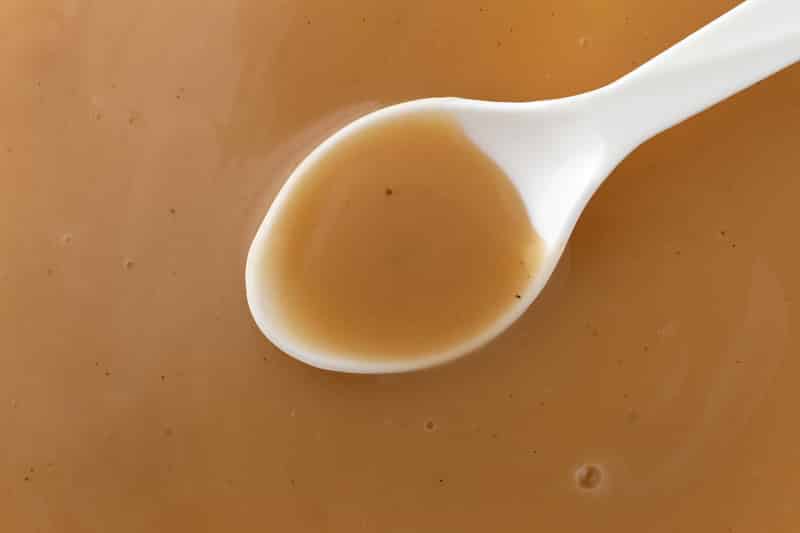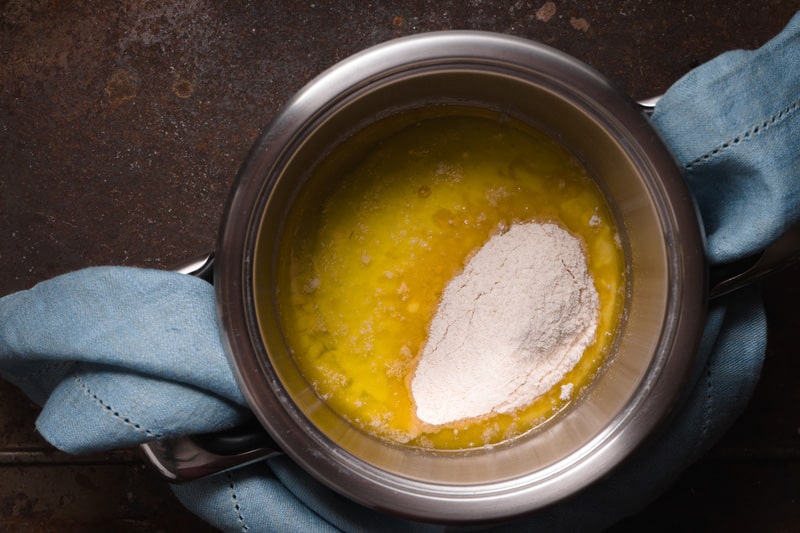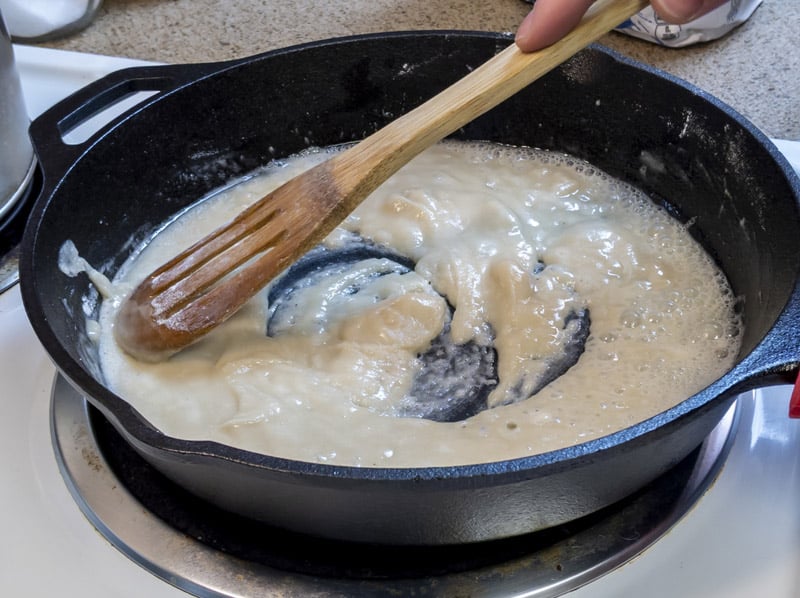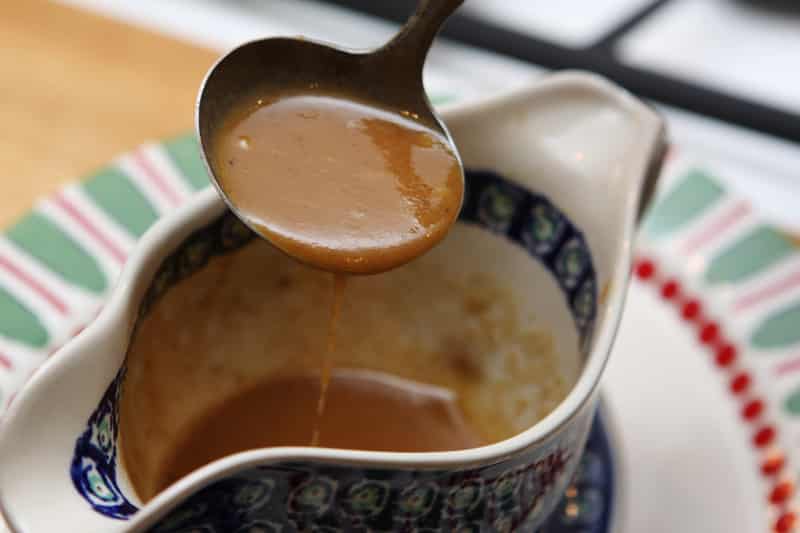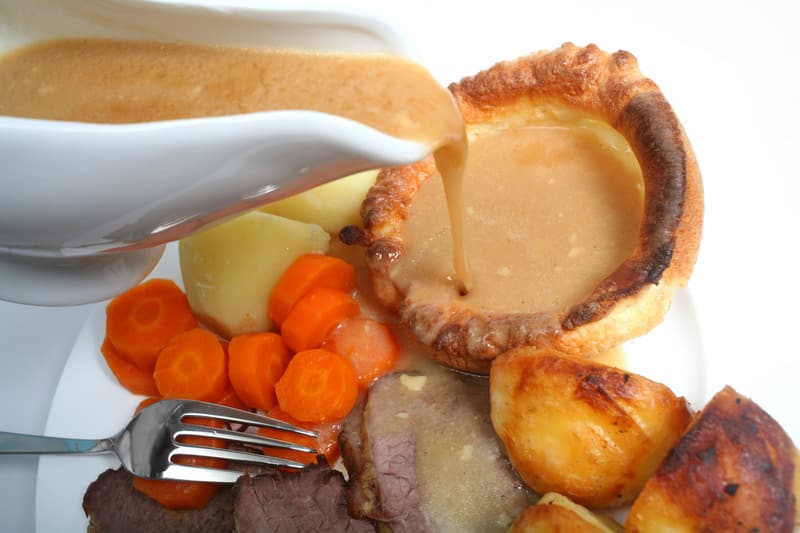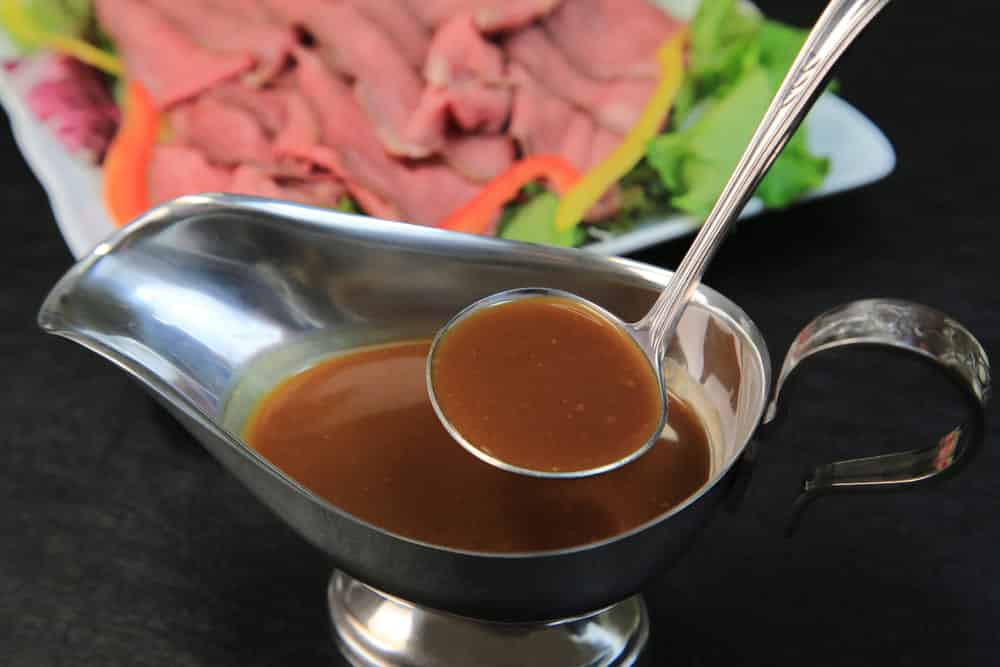
A well-cooked gravy rounds off a meal perfectly and is a satisfying addition to your dinner table. There are multiple ways people serve their gravy. Some like to pool it around their chicken or pour it over their roast beef while others simply want to smother their mashed potatoes with it.
No matter how you like your gravy, it should be non-floury, rich, savory, and smooth. However, trying to perfect gravy can sometimes be frustrating. Many people don’t even attempt to make it and resort to packet mixes. Please don’t do this! It can be tricky to get the texture right.
Many home cooks complain that their gravy tastes “floury”. We’re here to show you the watchpoints when making gravy and to tell you how to achieve the perfect consistency with no flouriness.
Gravy Tastes Like Flour
Flour or cornflour is an essential thickening ingredient for making gravy. Unless you are making a jus, which is often thickened only by reducing the liquid, you will need to master the use of flour. Flour thickens and makes your gravy creamy.
Gravy may taste floury for a couple of reasons:
- You added too much flour. Start small – it is seldom necessary to use more than two tablespoonfuls for a regular-sized meal.
- You didn’t cook it long enough after adding the flour, so the flour was still raw.
- There weren’t enough other flavorings such as meat stock, herbs, and spices so all you can taste is flour.
What Do You Do When Your Gravy Tastes Like Flour?
We have a couple of fixes that you can try.
- Cook the gravy for longer to ensure the flour is properly cooked.
- Add more seasonings.
- Use a stick blender to blend out any lumps and create a smooth, creamy texture.
- If you don’t have a blender, simply strain your gravy through a wire sieve. You will need to reheat it when you’re done.
These tips should help you rescue gravy that has already been made. Read on and learn how to prevent the problem from occurring in the future.
Method 1: Blend a Little Flour With Broth
The floury taste you get is often due to the insufficient cooking of flour. To avoid it, mix 2 tablespoons of flour in two cups of cooled, well-flavored broth. Blend these together well until the mixture is completely smooth.
You can use a stick blender or put the mixture into a jar with a lid and shake it. Now, tip this mixture into a small saucepan and heat it gently, stirring, until it boils and thickens. Simmer and stir it for at least five minutes to cook the flour. Season further if necessary.
Method 2: Use a Roux
Whisk the flour with an equal quantity of fat over a low flame. Two tablespoons of each is a good amount. Cook them together, stirring, for a couple of minutes until you have a rich paste. Over a medium flame, slowly whisk in some hot broth.
Keep adding and whisking until you have a gravy-like consistency. Taste and check the seasoning. Allow this gravy to cook for another minute or two to cook the flour properly.
Method 3: Make Flourless Gravy
Ingredients:
- 2 tablespoons pan drippings
- 1 tablespoon finely chopped shallot
- 1/2 cup white wine
- 1/2 cup hot chicken, beef, or vegetable stock
- 2 tablespoons soft unsalted butter
- Salt, to taste
- Freshly ground black pepper, to taste
- Freshly squeezed lemon juice
Method:
- Use the pan that your meat was cooked in, including all the sticky bits. Leave 2 tablespoons of fat in it.
- Over a medium-high flame, add the shallot and the wine.
- Simmer, stirring and scraping the pan, until most of the wine has evaporated and the bits on the pan have come loose.
- Add the stock and keep stirring.
- Cook down until you have just half a cup of liquid.
- Whisk in the butter a little at a time.
- Season with salt, pepper, and a little lemon juice (just a squeeze).
- Serve the gravy very hot.
Conclusion:
Please don’t give up on making gravy! Try our tips and you’re sure to have rich, meaty gravy without a hint of flour flavor.
